
Diego Rodriguez de Silva Velazquez Giclée Fine Art Prints 3 of 5
1599-1660
Spanish Baroque Painter
He was a contemporary of the two geniuses in painting - the Flemish Rubens and the Dutch Rembrandt. He knew Rubens personally. The Flemish master was already world-famous at this time and probably did not anticipate that the fame of his Spanish friend, who was at the beginning of his artistic career, would ever reach his own, and perhaps even surpass it. Fortune was kind to Velázquez; it assured him rapid success, advancement and a carefree life. In his youth he became a court painter, and although most of his portraits were painted by royal commission, other courtly duties so filled his time that he regarded painting almost as a sideline.
His life did not abound with events. He was born in Seville in June 1599. At that time this city was the centre of the arts, sciences and economic life of Spain. Velázquez's parents were wealthy, carefully educating their child, teaching him Latin and philosophy. His first paintings date from his childhood. At the age of twenty-three, he went for the first time to the capital of his homeland, Madrid. During this short stay, the young artist only looked around and explored future possibilities. Then he painted the portrait of the famous writer of the time, later mentioned only in literary history, Luis de Gongora. Perhaps it was this portrait or other circumstances that led to his attention; in any case, he was called back to Madrid the following year. At the royal court he was received with great respect; he was commissioned to paint portraits of the king and the royal family. During his lifetime he painted more than thirty portraits of the King, whose typically Habsburg features he immortalised from adolescence to old age. In order to place the ugly king in the most favourable position possible, he almost always painted him on the right in three-quarters.
In 1628 he was the first to be depicted in the painting. Velázquez met Rubens, and in the following year went, on his advice, to Italy. He first went to Venice, spent a year in Rome, then visited Naples. In 1631 he returned to Spain. In fact, then began the era of his portraits. During these years he painted prominent court nobles. Not long after, he also became a court painter. By royal favour he later had the opportunity to go to Italy once more. This time he went as a courtier, as an envoy of the King of Spain, to purchase paintings and plaster casts of ancient statues for the royal collection. Velázquez spent a long time in Rome, where he produced one of his finest works, the famous portrait of Pope Innocent X. In 1651 he returned to the Spanish palace. His work came to an abrupt end. In 1660, in his capacity as court painter, he prepared a meeting between the French and Spanish kings near the border and died suddenly at the age of 61 in the prime of his creative powers.
Velázquez depicted the life of a decadent world with sophistication and feeling, but also with extraordinary realism and humanity. Spain, over whose vast colonial possessions the sun had 'never set', was losing its maritime power as a result of the wars it was fighting with England. At the beginning of the 17th century she suffered a series of setbacks in the European political arena. And its economic power weakened considerably. All these failures, which testify to decline, did not prevent the palace from continuing its terribly rigid and ceremonial life. It is this world that Velázquez depicts in all its cold reality so truthfully and so critically that, when confronted with a painting, we feel the stuffy atmosphere of the palace. The stiff robes of the queen, the infanta and the court ladies radiate the lifelessness of idols. At the same time, the perfect harmony of the few colours of the dress, which makes us seem to feel the rustling of the fabric and its dazzling brilliancy, testify to a pictorial talent with which few have been endowed.
The first step in Velázquez's artistic development (as in Goya's work) was a series of paintings of the life of the people. These paintings are called "Bodegón" in Spanish painting, and by this name we mean canvases which have as their subject kitchen still-lifes or figures of merchants. In them the artist depicts the common people of the nation.
His Italian travels are associated with two important paintings. In the first, he painted "The Forge of Vulcan", in which he used a subject from mythology to paint the inside of a forge. On his second trip, the portrait of "Pope Innocent X" was born, the work that the greatest portraitist of the 18th century, Sir Joshua Reynolds, said was the finest painting of Rome. It may be thought that this is no exaggeration. On his return, Velázquez produced a fascinating and fantastic series, unique in the history of painting - the poignant, despite their repulsive ugliness, shocking portraits of the dwarfs, laughing men and gnomes belonging to the royal palace. As a history painter he ranks among the greatest, despite having produced a single painting on such a subject. "The Surrender of Breda" is a masterpiece, as Goya's later revolutionary scenes are masterpieces.
In the last years of his life, Velázquez summed up in two major works what he had to say as a painter. The painting entitled "Las Meninas" depicts the artist's studio. In both subject matter and pictorial manner, "The Fable of Arachne" is a work far ahead of its time.
His life did not abound with events. He was born in Seville in June 1599. At that time this city was the centre of the arts, sciences and economic life of Spain. Velázquez's parents were wealthy, carefully educating their child, teaching him Latin and philosophy. His first paintings date from his childhood. At the age of twenty-three, he went for the first time to the capital of his homeland, Madrid. During this short stay, the young artist only looked around and explored future possibilities. Then he painted the portrait of the famous writer of the time, later mentioned only in literary history, Luis de Gongora. Perhaps it was this portrait or other circumstances that led to his attention; in any case, he was called back to Madrid the following year. At the royal court he was received with great respect; he was commissioned to paint portraits of the king and the royal family. During his lifetime he painted more than thirty portraits of the King, whose typically Habsburg features he immortalised from adolescence to old age. In order to place the ugly king in the most favourable position possible, he almost always painted him on the right in three-quarters.
In 1628 he was the first to be depicted in the painting. Velázquez met Rubens, and in the following year went, on his advice, to Italy. He first went to Venice, spent a year in Rome, then visited Naples. In 1631 he returned to Spain. In fact, then began the era of his portraits. During these years he painted prominent court nobles. Not long after, he also became a court painter. By royal favour he later had the opportunity to go to Italy once more. This time he went as a courtier, as an envoy of the King of Spain, to purchase paintings and plaster casts of ancient statues for the royal collection. Velázquez spent a long time in Rome, where he produced one of his finest works, the famous portrait of Pope Innocent X. In 1651 he returned to the Spanish palace. His work came to an abrupt end. In 1660, in his capacity as court painter, he prepared a meeting between the French and Spanish kings near the border and died suddenly at the age of 61 in the prime of his creative powers.
Velázquez depicted the life of a decadent world with sophistication and feeling, but also with extraordinary realism and humanity. Spain, over whose vast colonial possessions the sun had 'never set', was losing its maritime power as a result of the wars it was fighting with England. At the beginning of the 17th century she suffered a series of setbacks in the European political arena. And its economic power weakened considerably. All these failures, which testify to decline, did not prevent the palace from continuing its terribly rigid and ceremonial life. It is this world that Velázquez depicts in all its cold reality so truthfully and so critically that, when confronted with a painting, we feel the stuffy atmosphere of the palace. The stiff robes of the queen, the infanta and the court ladies radiate the lifelessness of idols. At the same time, the perfect harmony of the few colours of the dress, which makes us seem to feel the rustling of the fabric and its dazzling brilliancy, testify to a pictorial talent with which few have been endowed.
The first step in Velázquez's artistic development (as in Goya's work) was a series of paintings of the life of the people. These paintings are called "Bodegón" in Spanish painting, and by this name we mean canvases which have as their subject kitchen still-lifes or figures of merchants. In them the artist depicts the common people of the nation.
His Italian travels are associated with two important paintings. In the first, he painted "The Forge of Vulcan", in which he used a subject from mythology to paint the inside of a forge. On his second trip, the portrait of "Pope Innocent X" was born, the work that the greatest portraitist of the 18th century, Sir Joshua Reynolds, said was the finest painting of Rome. It may be thought that this is no exaggeration. On his return, Velázquez produced a fascinating and fantastic series, unique in the history of painting - the poignant, despite their repulsive ugliness, shocking portraits of the dwarfs, laughing men and gnomes belonging to the royal palace. As a history painter he ranks among the greatest, despite having produced a single painting on such a subject. "The Surrender of Breda" is a masterpiece, as Goya's later revolutionary scenes are masterpieces.
In the last years of his life, Velázquez summed up in two major works what he had to say as a painter. The painting entitled "Las Meninas" depicts the artist's studio. In both subject matter and pictorial manner, "The Fable of Arachne" is a work far ahead of its time.
99 Velazquez Artworks
Page 3 of 5

Giclée Canvas Print
$99.95
$99.95
SKU: 1064-VDZ
Diego Rodriguez de Silva Velazquez
Original Size:67 x 54.5 cm
The State Hermitage Museum, St. Petersburg, Russia
Diego Rodriguez de Silva Velazquez
Original Size:67 x 54.5 cm
The State Hermitage Museum, St. Petersburg, Russia
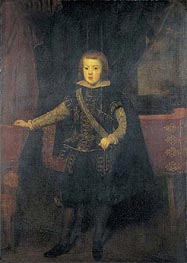
Giclée Canvas Print
$58.41
$58.41
SKU: 8296-VDZ
Diego Rodriguez de Silva Velazquez
Original Size:154 x 108.3 cm
The Wallace Collection, London, UK
Diego Rodriguez de Silva Velazquez
Original Size:154 x 108.3 cm
The Wallace Collection, London, UK
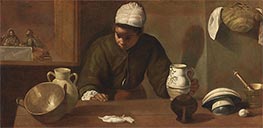
Giclée Canvas Print
$54.63
$54.63
SKU: 18788-VDZ
Diego Rodriguez de Silva Velazquez
Original Size:55 x 118 cm
National Gallery, Dublin, Ireland
Diego Rodriguez de Silva Velazquez
Original Size:55 x 118 cm
National Gallery, Dublin, Ireland
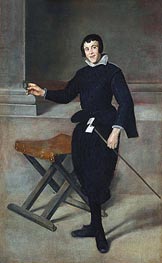
Giclée Canvas Print
$54.63
$54.63
SKU: 8291-VDZ
Diego Rodriguez de Silva Velazquez
Original Size:175 x 106 cm
Cleveland Museum of Art, Ohio, USA
Diego Rodriguez de Silva Velazquez
Original Size:175 x 106 cm
Cleveland Museum of Art, Ohio, USA
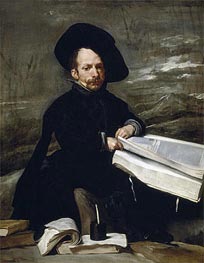
Giclée Canvas Print
$64.14
$64.14
SKU: 1047-VDZ
Diego Rodriguez de Silva Velazquez
Original Size:107 x 82 cm
Prado Museum, Madrid, Spain
Diego Rodriguez de Silva Velazquez
Original Size:107 x 82 cm
Prado Museum, Madrid, Spain

Giclée Canvas Print
$103.20
$103.20
SKU: 1048-VDZ
Diego Rodriguez de Silva Velazquez
Original Size:106 x 81 cm
Prado Museum, Madrid, Spain
Diego Rodriguez de Silva Velazquez
Original Size:106 x 81 cm
Prado Museum, Madrid, Spain
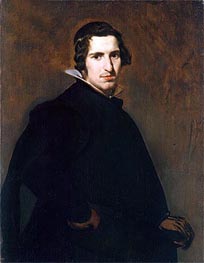
Giclée Canvas Print
$64.43
$64.43
SKU: 8275-VDZ
Diego Rodriguez de Silva Velazquez
Original Size:89.2 x 69.5 cm
Alte Pinakothek, Munich, Germany
Diego Rodriguez de Silva Velazquez
Original Size:89.2 x 69.5 cm
Alte Pinakothek, Munich, Germany
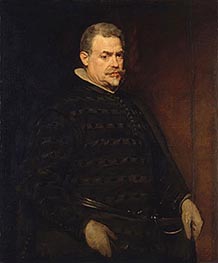
Giclée Canvas Print
$68.05
$68.05
SKU: 8277-VDZ
Diego Rodriguez de Silva Velazquez
Original Size:109.3 x 90.4 cm
Gemaldegalerie Alte Meister, Dresden, Germany
Diego Rodriguez de Silva Velazquez
Original Size:109.3 x 90.4 cm
Gemaldegalerie Alte Meister, Dresden, Germany
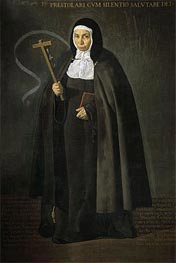
Giclée Canvas Print
$55.10
$55.10
SKU: 1028-VDZ
Diego Rodriguez de Silva Velazquez
Original Size:160 x 110 cm
Prado Museum, Madrid, Spain
Diego Rodriguez de Silva Velazquez
Original Size:160 x 110 cm
Prado Museum, Madrid, Spain
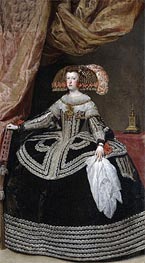
Giclée Canvas Print
$75.79
$75.79
SKU: 1053-VDZ
Diego Rodriguez de Silva Velazquez
Original Size:234 x 131.5 cm
Prado Museum, Madrid, Spain
Diego Rodriguez de Silva Velazquez
Original Size:234 x 131.5 cm
Prado Museum, Madrid, Spain
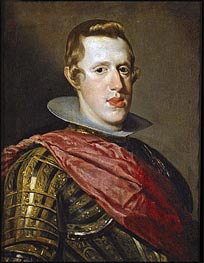
Giclée Canvas Print
$68.65
$68.65
SKU: 1037-VDZ
Diego Rodriguez de Silva Velazquez
Original Size:57 x 44 cm
Prado Museum, Madrid, Spain
Diego Rodriguez de Silva Velazquez
Original Size:57 x 44 cm
Prado Museum, Madrid, Spain
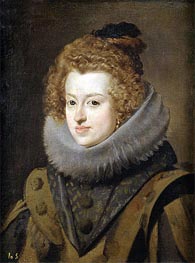
Giclée Canvas Print
$72.48
$72.48
SKU: 1038-VDZ
Diego Rodriguez de Silva Velazquez
Original Size:59.5 x 44.5 cm
Prado Museum, Madrid, Spain
Diego Rodriguez de Silva Velazquez
Original Size:59.5 x 44.5 cm
Prado Museum, Madrid, Spain
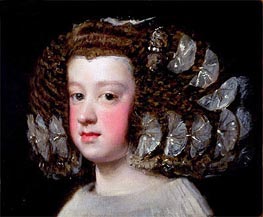
Giclée Canvas Print
$54.63
$54.63
SKU: 1055-VDZ
Diego Rodriguez de Silva Velazquez
Original Size:32.7 x 38.4 cm
Metropolitan Museum of Art, New York, USA
Diego Rodriguez de Silva Velazquez
Original Size:32.7 x 38.4 cm
Metropolitan Museum of Art, New York, USA
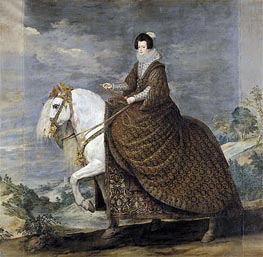
Giclée Canvas Print
$80.99
$80.99
SKU: 8267-VDZ
Diego Rodriguez de Silva Velazquez
Original Size:301 x 314 cm
Prado Museum, Madrid, Spain
Diego Rodriguez de Silva Velazquez
Original Size:301 x 314 cm
Prado Museum, Madrid, Spain
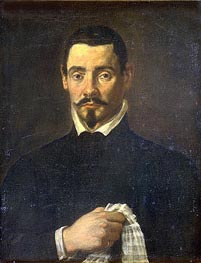
Giclée Canvas Print
$79.98
$79.98
SKU: 8280-VDZ
Diego Rodriguez de Silva Velazquez
Original Size:61 x 47.9 cm
Fine Arts Museums of San Francisco, California, USA
Diego Rodriguez de Silva Velazquez
Original Size:61 x 47.9 cm
Fine Arts Museums of San Francisco, California, USA
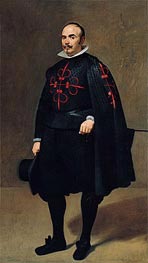
Giclée Canvas Print
$54.63
$54.63
SKU: 8292-VDZ
Diego Rodriguez de Silva Velazquez
Original Size:198.1 x 111.4 cm
Kimbell Art Museum, Fort Worth, USA
Diego Rodriguez de Silva Velazquez
Original Size:198.1 x 111.4 cm
Kimbell Art Museum, Fort Worth, USA
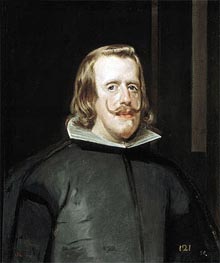
Giclée Canvas Print
$105.77
$105.77
SKU: 8274-VDZ
Diego Rodriguez de Silva Velazquez
Original Size:69 x 56 cm
Prado Museum, Madrid, Spain
Diego Rodriguez de Silva Velazquez
Original Size:69 x 56 cm
Prado Museum, Madrid, Spain
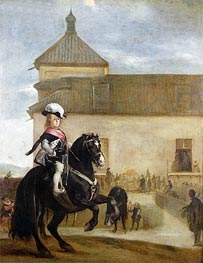
Giclée Canvas Print
$64.29
$64.29
SKU: 8251-VDZ
Diego Rodriguez de Silva Velazquez
Original Size:130 x 102 cm
The Wallace Collection, London, UK
Diego Rodriguez de Silva Velazquez
Original Size:130 x 102 cm
The Wallace Collection, London, UK
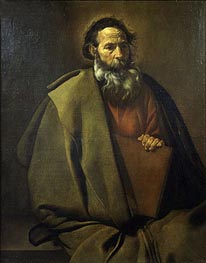
Giclée Canvas Print
$64.74
$64.74
SKU: 8250-VDZ
Diego Rodriguez de Silva Velazquez
Original Size:99 x 78 cm
Museu Nacional d'Art de Catalunya, Barcelona, Spain
Diego Rodriguez de Silva Velazquez
Original Size:99 x 78 cm
Museu Nacional d'Art de Catalunya, Barcelona, Spain
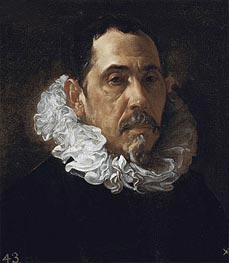
Giclée Canvas Print
$54.63
$54.63
SKU: 8258-VDZ
Diego Rodriguez de Silva Velazquez
Original Size:40 x 36 cm
Prado Museum, Madrid, Spain
Diego Rodriguez de Silva Velazquez
Original Size:40 x 36 cm
Prado Museum, Madrid, Spain
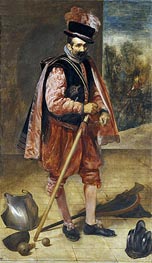
Giclée Canvas Print
$79.48
$79.48
SKU: 8263-VDZ
Diego Rodriguez de Silva Velazquez
Original Size:210 x 123 cm
Prado Museum, Madrid, Spain
Diego Rodriguez de Silva Velazquez
Original Size:210 x 123 cm
Prado Museum, Madrid, Spain
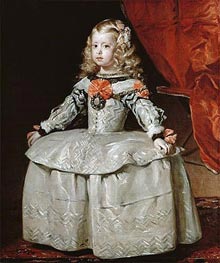
Giclée Canvas Print
$69.10
$69.10
SKU: 8306-VDZ
Diego Rodriguez de Silva Velazquez
Original Size:105 x 88 cm
Kunsthistorisches Museum, Vienna, Austria
Diego Rodriguez de Silva Velazquez
Original Size:105 x 88 cm
Kunsthistorisches Museum, Vienna, Austria
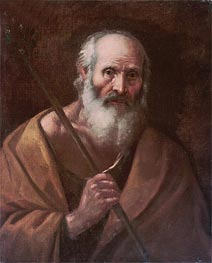
Giclée Canvas Print
$81.81
$81.81
SKU: 8244-VDZ
Diego Rodriguez de Silva Velazquez
Original Size:unknown
Private Collection
Diego Rodriguez de Silva Velazquez
Original Size:unknown
Private Collection

Giclée Canvas Print
$98.72
$98.72
SKU: 1060-VDZ
Diego Rodriguez de Silva Velazquez
Original Size:257 x 188 cm
Prado Museum, Madrid, Spain
Diego Rodriguez de Silva Velazquez
Original Size:257 x 188 cm
Prado Museum, Madrid, Spain